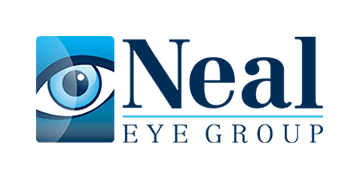How Can Your Eye Doctor Address Visual Neglect?
Visual neglect, also known as unilateral visual neglect or hemispatial neglect, is a neurological condition in which individuals fail to be aware of or respond to stimuli on one side of their visual field. This condition often affects patients who have suffered strokes, traumatic brain injuries, or other neurological events. Addressing visual neglect is essential for improving a patient’s quality of life and restoring functionality. Eye doctors, along with a team of healthcare professionals, can play a crucial role in the assessment and management of this condition.
Understanding Visual Neglect
Visual neglect typically occurs when there is damage to the right hemisphere of the brain, leading to a lack of awareness of the left visual field, although it can occur with damages in other regions of the brain as well. This condition does not relate to a deficiency in vision but rather an inability to acknowledge stimuli occurring on one side. Individuals with visual neglect may ignore objects, people, or even their own body parts on the neglected side, making daily tasks challenging and potentially dangerous.
Initial Assessment
The first step in addressing visual neglect involves a thorough assessment by an eye doctor or a neuro-ophthalmologist. This assessment typically includes a complete eye examination and a comprehensive evaluation of visual fields and cognitive functions. Eye doctors may employ specific tests, such as confrontation testing and automated perimetry, to determine the extent of visual neglect and identify which areas of the visual field are affected.
During the assessment, it is also essential for the eye doctor to gather information about the patient’s medical history, including any previous neurological conditions or events. Understanding the underlying cause of the neglect will inform the treatment plan and help establish appropriate rehabilitation strategies.
Collaborative Treatment Approaches
Addressing visual neglect often requires a multidisciplinary approach. Eye doctors typically collaborate with neurologists, occupational therapists, and other rehabilitation specialists to create a comprehensive treatment plan tailored to the patient’s specific needs.
Vision Therapy
Vision therapy is an essential part of treating visual neglect. Eye doctors may recommend specialized exercises that train the brain to improve visual attention on the neglected side. These exercises can involve activities designed to enhance spatial awareness and increase the patient’s ability to detect stimuli in their neglected visual field. The goal of vision therapy is to help patients regain awareness and responsiveness to the side they previously ignored.
Environmental Modifications
Another critical aspect of addressing visual neglect involves modifying the patient’s environment. Eye doctors and occupational therapists can work with patients and their families to create an environment that promotes engagement with the neglected visual field. For example, arranging furniture, ensuring adequate lighting, and placing objects on the neglected side can encourage patients to interact with their environment more fully.
In addition, using visual cues or markers can help guide individuals’ attention to the neglected side. Brightly colored stickers or objects placed strategically within their environment may prompt patients to notice stimuli they would have otherwise ignored.
Compensatory Strategies
In addition to direct treatment of the visual neglect, eye doctors can teach compensatory strategies to help patients adapt to their condition and improve their quality of life. These strategies may include techniques for scanning the visual field, such as deliberately turning their head to check for objects or stimuli on the neglected side. Training patients to be more aware of their surroundings and to make active efforts to scan their environment can improve their functional abilities.
Educating patients and their families about visual neglect is crucial for understanding the condition and its implications. Awareness can foster better support systems for patients as they navigate daily tasks and challenges.
Ongoing Monitoring and Adjustment
Addressing visual neglect requires ongoing monitoring and support. Regular follow-up appointments with the eye doctor are essential to assess the progress of the treatment plan and make necessary adjustments. The rehabilitation process may take time, and progress can vary between individuals. Eye doctors must be patient and provide encouragement as patients work through challenges.
Addressing Psychological Aspects
It is also important to consider the psychological aspects of visual neglect. Individuals experiencing this condition may feel frustration, anxiety, or depression due to their impairment. Addressing these emotional aspects through counseling or support groups can help patients process their experiences and cultivate resilience.
Collaboration with mental health professionals can provide additional support, ensuring a holistic approach to recovery. Encouraging patients to engage in social activities and providing opportunities for interaction can also play a vital role in their rehabilitation journey.

0 Comments